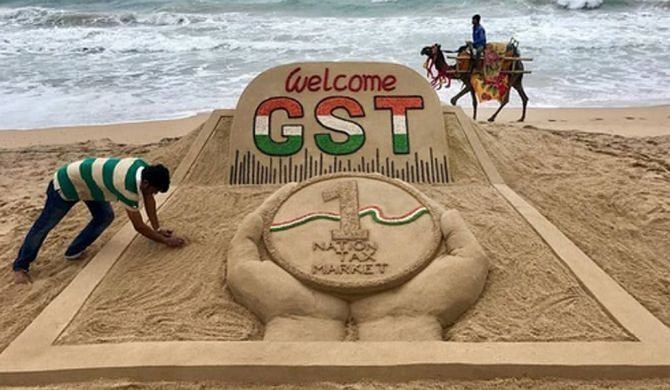At Rs 1.05 trillion, collection was not only 10 per cent higher than the Rs 95,379 crore a year ago but almost equal to that in February, which was before the lockdown and when the pandemic hadn’t struck.

Goods and Services Tax (GST) collection in October crossed Rs 1 trillion for the first time in eight months, indicating the results of the unlocking from September onwards.
Collection in any month is for the business done in the previous month.
At Rs 1.05 trillion, collection was not only 10 per cent higher than the Rs 95,379 crore a year ago but almost equal to that in February, which was before the lockdown and when the pandemic hadn’t struck.
The finance ministry said growth in GST at 10 per cent and 4 per cent in the previous month showed the trajectory of economic recovery and, correspondingly, the revenues.
The finance ministry said growth in GST at 10 per cent as compared to declines of 14 per cent, 8 per cent, and 5 per cent in July, August, and September, respectively, showed the trajectory of economic recovery and, correspondingly, the revenues.
However, experts warned of over-interpreting the numbers and said their sustainability needed to be watched beyond November.
“Given the festivities, collection in November could also be robust. We would need to see if this trend held after November as well,” said Pratik Jain, partner at PwC.
Eight million input-output summary returns were filed in October.
Jain said this was because the last date for claiming input tax credit for 2019-20 was September 30 and a lot of companies must have carried out a yearly reconciliation and asked their vendors to file returns or report missing transactions, among other factors.
“We remain as yet unconvinced on the persistence of this trend after the festive season is over, after the pent-up demand is fulfilled,” said Aditi Nayar, principal economist, ICRA.
M S Mani, senior director at Deloitte, said GST collection indicated a definite revival in consumption and festival spends in the economy.
“The continuance of this trend will help in narrowing the fiscal deficit for 2020-21 and will go a long way in reviving business confidence across sectors as the impact of unlockdown across states gets translated into GST collection figures,” said Mani.
All components of GS - central GST (CGST), state GST (SGST), integrated GST (IGST), or the compensation cess - were higher in October than in September.
For instance, CGST yielded Rs 19,193 crore in October, against Rs 17,741 crore in September, and SGST Rs 25,411 crore in October, against Rs 23,131 crore in the previous month.
IGST collection stood at Rs 52,540 crore in October, against Rs 47,484 crore in September. Of this, Rs 23,375 crore was collected through imports of goods, against Rs 22,442 crore in September.
Compensation cess collection rose to Rs 8,011 crore, against Rs 7,124 crore. Of this, Rs 932 crore was through imports of goods, against Rs 788 crore in September.
Abhishek Jain, tax partner, EY, said, “This uptick in collection on a month-on-month basis and over the same month last year is a welcome one.”
He attributed this to greater demand on account of the festivities and input tax credit and other similar reconciliations which were due to businesses in September.
In October, revenues (IGST) from imports of goods were 9 per cent higher and collection from domestic transactions (including imports of services) was 11 per cent more than those from these sources during the same month last year.
This also indicates revival in demand in the economy.
The number of states showing a fall in GST collection from domestic transactions reduced to six in October, from 14 in September.
Kapil Rana, founder and chairman of HostBooks, said growth in GST collection and returns filed depicted strong economic recovery.
The Indian economy contracted 23.9 per cent in the first quarter and various projections have estimated the fall in gross domestic product at over 9 per cent this fiscal year.
Photograph: PTI Photo











